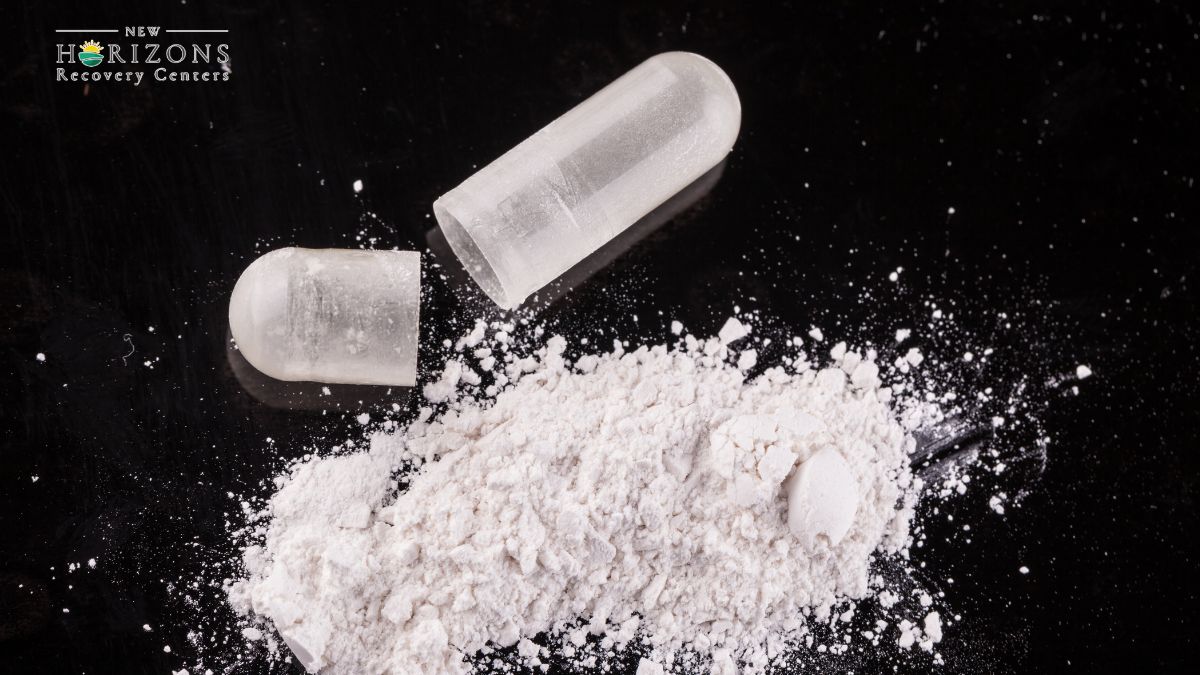Global Drug Seizure Statistics

When examining drug trafficking statistics, understanding the scope of drug seizures globally provides valuable insights into the scale of illicit drug activities. This section provides an overview of drug seizures and explores the trends observed in drug seizure data.
Overview of Drug Seizures
The Drug Seizures dashboard now includes seizures of all drug types as of December 15, 2021, with data extracted from live CBP systems and sources. Final statistics are available at the conclusion of each fiscal year. Global drug seizure efforts play a critical role in combating drug trafficking networks and preventing illicit substances from reaching communities.
In 2008, global heroin seizures reached a record level of 73.7 metric tons, with significant amounts seized in regions such as the Near and Middle East, SouthWest Asia, SouthEast Europe, and Western and Central Europe. The increase in heroin seizures during this period was primarily driven by intensified efforts in countries like the Islamic Republic of Iran and Turkey, which accounted for a substantial portion of global heroin seizures.
Trends in Drug Seizures
Over recent years, global cocaine seizure totals have demonstrated a stable trend, with concentrations in regions such as the Americas and Europe. In 2007 and 2008, global cocaine seizures amounted to 712 tons and 711 tons, respectively. A notable shift in the geographical distribution of seizures occurred in 2008, with South America accounting for a larger share of the global total compared to previous years.
Currently, world heroin consumption and seizures represent a significant annual flow of heroin into the global market. Afghan opium remains a primary source, with approximately 380 tons of heroin and morphine produced from Afghan opium annually. The trafficking of these substances, along with opium from other regions, highlights the extensive network involved in the distribution of illicit drugs [2].
By monitoring and analyzing global drug seizure statistics, authorities can better understand the dynamics of drug trafficking, identify emerging trends, and enhance strategies to combat the illicit drug trade.
Economic Impact of Drug Abuse

When examining the cost of drug abuse, it becomes evident that the financial implications extend beyond individual health concerns to broader societal and economic consequences. The economic toll of drug abuse encompasses various factors, including direct costs, productivity losses, and impacts on the overall economy.
Cost of Drug Abuse
In the United States, the economic burden of drug abuse was estimated at $193 billion in 2007, according to the last available statistics. This figure incorporates expenses related to labor force turnover, absenteeism, healthcare costs, and the detrimental effects on school performance. The financial strain caused by drug abuse not only affects individuals and families but also places a significant strain on public resources and support systems.
Impact on the Economy
The global drug market plays a substantial role in shaping the economic landscape. The World Drug Report 2023 highlights that the global drug market is valued at a staggering $426 billion, with opioids representing a significant portion at $150 billion. The economic impact of drug abuse extends far beyond the direct monetary costs, influencing sectors such as law enforcement, healthcare, and social services.
The illicit drug trade not only fuels criminal activities but also disrupts legitimate markets, leading to instability and economic distortions. The financial resources diverted towards combating drug trafficking and addressing the consequences of substance abuse could otherwise be allocated to productive investments and societal development.
Understanding the economic repercussions of drug abuse is essential for policymakers, healthcare professionals, and stakeholders to implement effective strategies aimed at mitigating the financial burden and fostering a healthier and more resilient society. By recognizing the interconnected nature of drug abuse and economic well-being, efforts can be directed towards prevention, treatment, and rehabilitation initiatives to combat the pervasive impact of substance abuse on individuals and economies worldwide.
Rise of Synthetic Opioids

The rise of highly potent synthetic opioids, notably fentanyl, has significantly impacted drug markets globally. Since 2014, there has been a surge in the availability and use of synthetic opioids, reshaping traditional drug use patterns and posing new challenges in combatting drug-related issues [5].
Emergence of Fentanyl
Fentanyl, a synthetic opioid that is far more potent than traditional opioids, has become a focal point in the current drug crisis. The introduction of fentanyl into street drug markets has led to a concerning increase in non-fatal and fatal overdose events. Its potency, combined with the availability of analogues and novel opioids like carfentanil and "nitazenes," has escalated the severity of the opioid epidemic. These substances can surpass fentanyl in potency by a factor of ten, exacerbating the risks associated with opioid use.
Impacts on Drug Markets
The proliferation of novel synthetic opioids, including the rapid emergence of substances like nitazenes, presents a challenge for forensic chemists and policymakers alike. The constant evolution of these compounds requires forensic chemists to adapt their toxicological profiling techniques to keep pace with the changing landscape of designer drugs. Policymakers must also adjust their lists of controlled substances to address the influx of new and potent opioids, cannabinoids, and stimulants.
In North America, fentanyl production is primarily decentralized and relies on smuggled precursors. The majority of fentanyl in the United States is manufactured in and trafficked from Mexico, while Canada experiences localized production within its borders. These regional production hubs contribute to the complexity of regulating and combating the spread of synthetic opioids like fentanyl [5].
The prevalence of synthetic opioids, particularly fentanyl, underscores the need for comprehensive strategies to address the evolving landscape of drug trafficking and substance abuse. By understanding the dynamics of synthetic opioids and their impacts on drug markets, policymakers and law enforcement agencies can better allocate resources and implement effective interventions to mitigate the harmful effects of these potent substances.
Online Drug Distribution

In the realm of drug trafficking statistics, the landscape has evolved with the rise of online drug distribution channels. One prominent method of online drug distribution is through the darknet. This section will delve into the intricacies of darknet distribution, exploring both its advantages and associated risks.
Darknet Distribution
The darknet has become a burgeoning platform for the distribution of illicit substances, enabling the transfer of drugs from dealers to users in a clandestine manner. According to a study by NCBI, drug trafficking activities have increasingly shifted towards online channels, with the darknet serving as a prominent avenue for such transactions. This shift poses significant challenges for law enforcement agencies in combating drug trafficking operations.
Advantages and Risks
Advantages of Darknet Distribution
Online drug distribution via the darknet offers several advantages to both suppliers and consumers. One key benefit is the anonymity it provides, allowing individuals to engage in drug transactions with reduced risk of detection. The darknet also expands the reach of drug suppliers, enabling them to cater to a global market with ease. Moreover, the availability of a wide range of drugs on these platforms contributes to the convenience and accessibility of illicit substances for users.
Risks of Darknet Distribution
Despite its advantages, darknet distribution comes with inherent risks. The anonymity that the darknet affords can embolden individuals to engage in illegal activities, leading to potential exploitation and harm. Moreover, the lack of regulatory oversight on these platforms raises concerns about the quality and safety of the drugs being distributed. Law enforcement agencies face challenges in monitoring and intercepting online drug trafficking activities, heightening the complexities of combating drug distribution in the virtual realm.
As drug trafficking organizations continue to exploit online channels such as the darknet and social media platforms for drug distribution, it is imperative for authorities to adapt their strategies to address these evolving trends. The interplay between technology and illicit drug trade underscores the need for comprehensive approaches to tackle online drug distribution while safeguarding public health and security.
Heroin Trafficking Routes
Exploring the intricate network of heroin trafficking routes reveals the significant flow of illicit substances across various regions. The Balkan Trafficking Route and the Northern Trafficking Route are two key pathways that play a crucial role in the distribution of heroin from its primary source to major markets.
Balkan Trafficking Route
The Balkan route serves as a vital conduit for transporting heroin from Afghanistan, the world's leading producer of opium, to lucrative markets in the Russian Federation and Western Europe. This route typically traverses countries such as the Islamic Republic of Iran (often via Pakistan), Turkey, Greece, and Bulgaria, spanning SouthEast Europe en route to Western Europe. According to the UNODC, the Balkan route boasts an annual market value of approximately $20 billion, highlighting the scale of illicit drug trade in this region.
Northern Trafficking Route
In contrast, the Northern Trafficking Route represents another significant pathway for the trafficking of heroin. This route predominantly guides the flow of illicit substances through countries like Tajikistan and Kyrgyzstan, with alternative paths leading through Uzbekistan or Turkmenistan to Kazakhstan and the Russian Federation. The Northern route plays a pivotal role in supplying heroin to the Russian market, with an estimated total market size of $13 billion annually, as reported by the UNODC.
The Balkan and Northern trafficking routes serve as lifelines for the heroin trade, facilitating the movement of substantial quantities of illicit substances across borders. Understanding these trafficking routes is crucial in combating the global drug trafficking network and implementing effective strategies to disrupt the flow of heroin from its origins to end markets.
Cocaine Consumption and Seizures
When examining drug trafficking statistics, it's essential to analyze the consumption patterns and seizure trends related to cocaine, a widely abused illicit substance.
Global Consumption Patterns
In 2007 and 2008, approximately 16 to 17 million individuals worldwide were reported to be using cocaine, a figure comparable to the number of global opiate users. Notably, North America represented over 40% of the global cocaine consumption, estimated at around 470 tons. Furthermore, the 27 European Union countries along with the four European Free Trade Association nations accounted for over a quarter of the total consumption. Collectively, these regions contributed to more than 80% of the total value of the global cocaine market, which was estimated at $88 billion in 2008.
Seizure Trends
Following a substantial increase between 2002 and 2005, global cocaine seizure totals have demonstrated a relatively stable trend in recent years. In 2007 and 2008, the total seizures amounted to 712 tons and 711 tons, respectively. The majority of seizures were concentrated in the Americas and Europe. However, a notable shift occurred from 2007 to 2008, with seizures moving towards the source countries for cocaine. South America accounted for 59% of the global total seizures in 2008, a significant increase from the 45% reported in 2007.
Understanding the consumption patterns and seizure trends of cocaine provides valuable insights into the prevalence and distribution of this illicit substance on a global scale. By monitoring and analyzing these statistics, authorities can better address and combat the challenges posed by cocaine trafficking and abuse.
References
[2]:
[3]:
[4]:
[5]:

-ink.jpeg)

-ink.jpeg)



